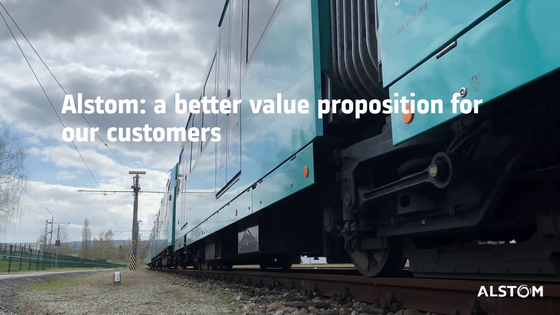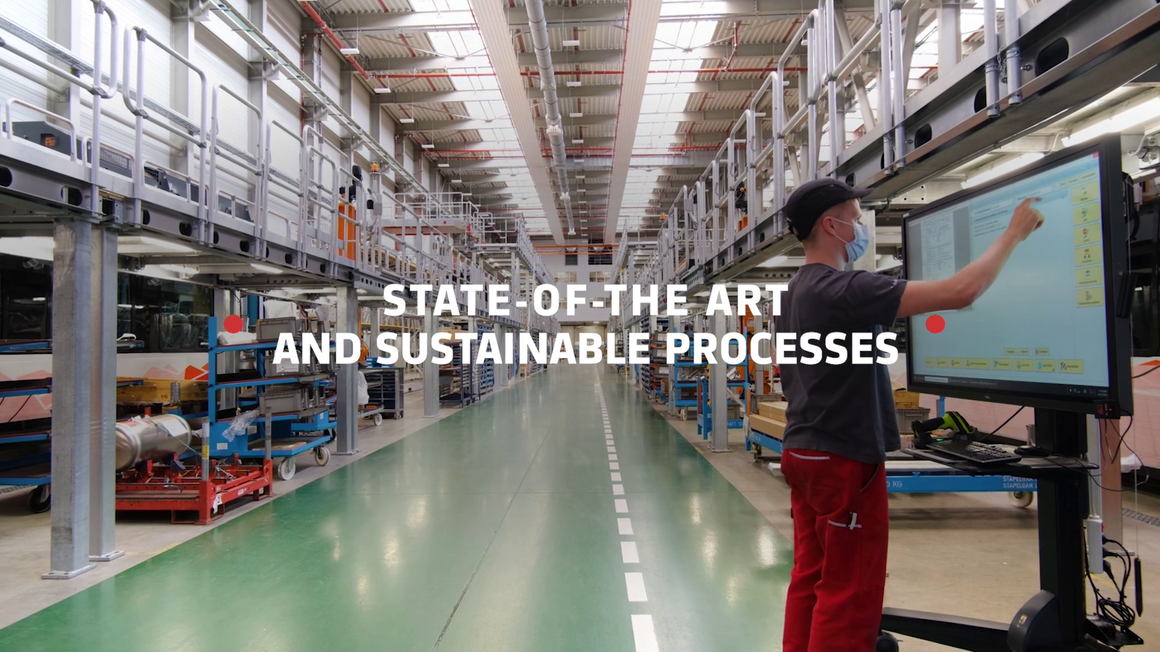
Alstom: a better value proposition for our customers

.

Danny Di Perna oozes enthusiasm for the job as Executive Vice-President and Chief Operating Officer of Alstom. He was born in Canada, a first-generation Italian, and is also a US citizen. After nearly 30 years of aerospace industry experience, he has more recently been promoting the more down-to-earth means of mobility for almost 3 years. In his spare time, he loves biking, and enjoys exploring London, where he currently resides. We sat down with Danny to get his view on the strengths of the new Alstom, and how he sees the added benefits of our enhanced portfolio.
Connect with Danny on LinkedIn.
How do Alstom’s products set it apart from the rest of the rail industry?
What makes Alstom a leader?
I am very excited about the new Alstom and its unique opportunity to serve our customers and contribute to sustainable mobility.
What sets us apart are products, people and presence.
We can offer products from the broadest portfolio range in the rail industry combining components, signalling and service solutions from both legacy companies Alstom and Bombardier. We now have a presence in more than 70 countries and long-standing partnerships with 1000+ customers. This gives us the benefit of knowing the customer needs to offer the best possible solution. And if I may add, our products are beautiful. Just consider the TGV in France or the coming Cairo Monorail.
And our people – we can build on the strong technical and market expertise, skills, passion, and diversity of thought of more than 70,000 employees including 17,000 engineers.
How do you plan to maintain your leading position in the market?
At Alstom, maintaining and building upon our leading market position is key to our future. We continue to invest in R&D, continue to drive competitiveness, and continue winning. It’s a very fierce competitive market and, in a COVID-impacted world, our customers are most certainly under financial duress. The big rail operators and traditional rail customers are looking for lower costs of ownership and advanced solutions, so we need to continue to drive our costs down and continue to invest in technology.
Our innovation focus is on green and smart solutions, as well healthier and inclusive mobility. On green mobility, we are driving emission-free propulsion systems like batteries and hydrogen, but also for high recycle rates so that we can offer the cleanest-powered rail systems.
On smart solutions, we continue to be a leader in that area as more and more systems become inter-connected, while we also continue to work with partners to have the first truly autonomous trains prototypes for freight and passengers ready by 2023 and in passenger service by 2025.
Covid-19 has brought a renewed focus in terms of cleanliness, air quality and particulates, to make sure people feel comfortable when they ride a train. We have been developing an offer we call “Healthier MobilityTM” to keep passengers moving safely during the pandemic. I am proud to say we were there when our customers needed to adapt to a very difficult situation. For example, we quickly enhanced our purifying and filtering systems to help reduce particulates in the air, and introduced smart digital solutions for passenger flow and crowd control.
What are some of the newest highlights in Alstom’s product portfolio?
Our hydrogen and battery trains are also developing rapidly. Both legacy businesses were engaged in battery power. With regards to hydrogen, however, Alstom has been the pioneering leader in developing the world’s first train hydrogen-powered train and train power systems for passenger operations since 2018. We recently acquired the fuel cell company Helion - which gives us a more broader technology competence. By offering different emission free traction technologies, our customer can find the sustainable solution best adapted to their needs.
Also, with the combination of the two companies, we are going to match the best technologies. For example, in Mexico we won the prestigious Tren Maya contract. As two independent businesses we would not have had as competitive an offering. We combined a legacy Alstom X’trapolis train with a legacy Bombardier Flexx Eco bogie system, all produced out of a legacy Bombardier site in Mexico. So, we are getting the best of both worlds, on product design and on manufacturing co-location.
What makes Alstom’s product portfolio unique?
We have an incredible breadth in our portfolio that I know our customers really appreciate. With the combination of what Alstom had before and what Bombardier had developed over many years, we can now mix and match our building blocks and develop great train products and systems to meet the growing trends of what our customers expect in terms of performance, green mobility and integrated systems. Also, we must remember that the two companies didn’t serve exactly the same customers. There is some overlap, but the complementary nature of our product portfolio, manufacturing locations and diverse customer base, does certainly give Alstom a unique opportunity to ring the door and say ‘we’ve got something even better for you now’.
How can Alstom’s products help the organisation balance growth and profitability?
We have an appetite to grow, and to do that profitably we need to manage our costs and train system designs to offer the best cost-efficient green mobility solutions to meet our customers’ needs. With our large global presence and reach and our unique low-cost design and manufacturing global locations, Alstom can most certainly leverage our breadth and skill to offer tremendous value to our customers across the globe. Our global scale and size not only benefit our customer offering, but also has positioned Alstom as the railway manufacturer of choice for our suppliers.


